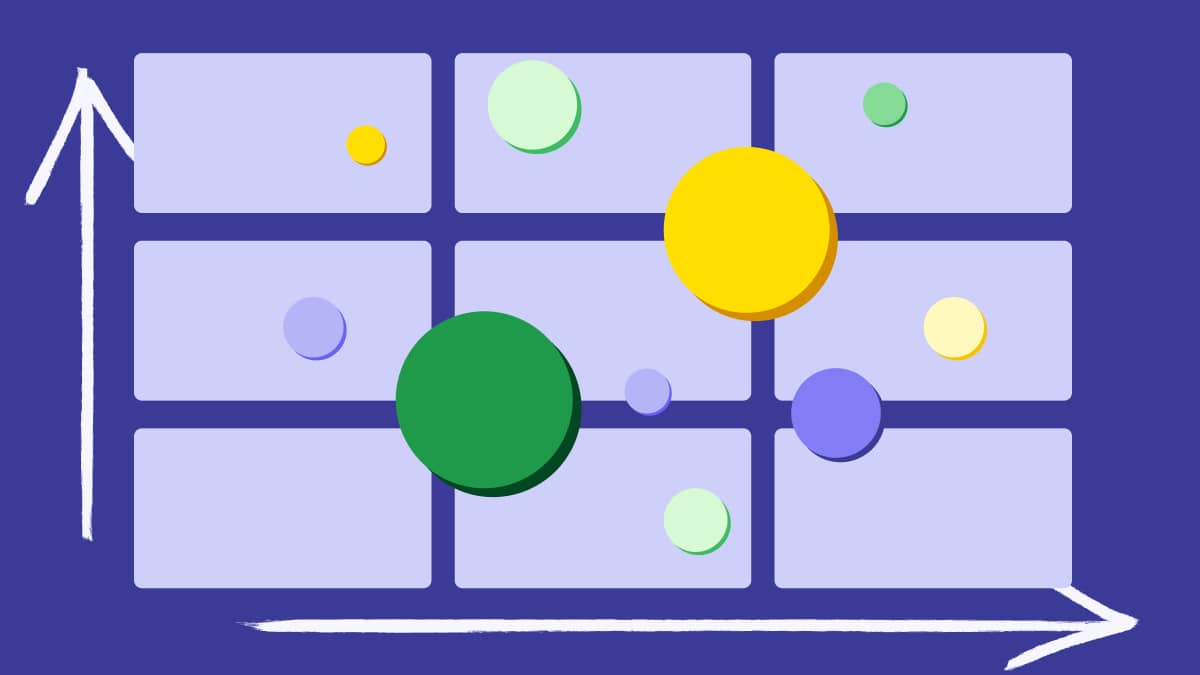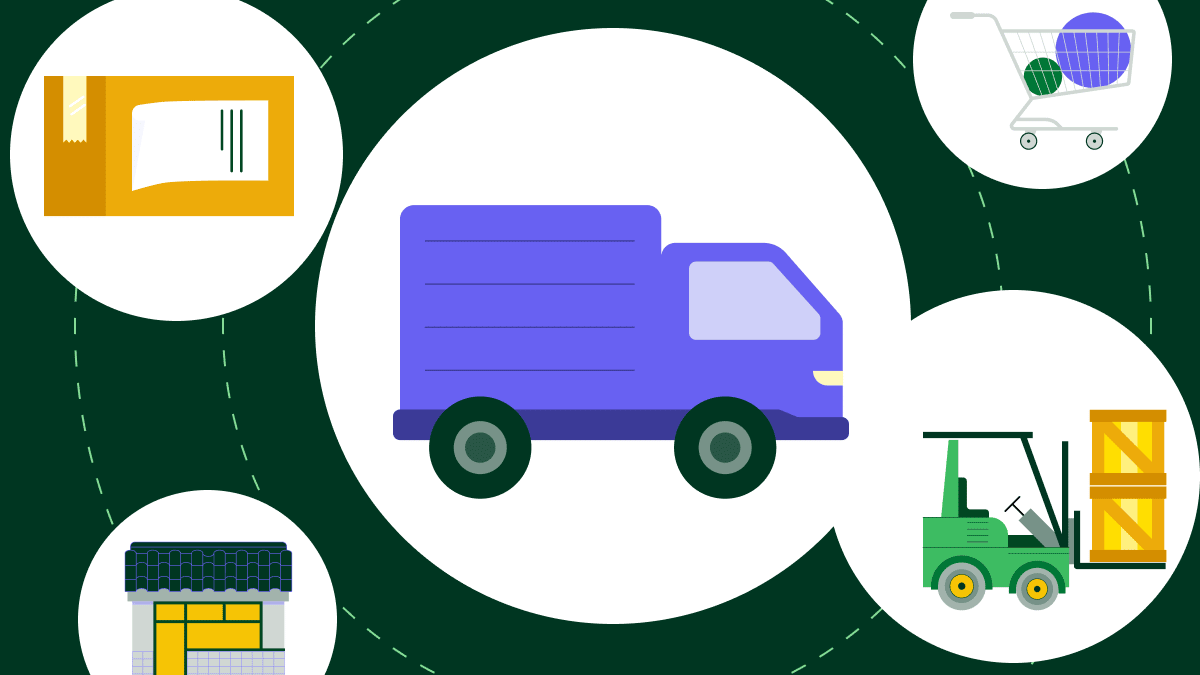Customer segmentation is an effective way of ensuring your products, services and marketing material meet your customers’ expectations.
There are many ways to segment your customers. Knowing which type of customer segmentation to use helps refine your messaging and target customers more precisely.
In this guide, we’ll give you our customer segmentation definition, then cover seven types of market segmentation and show you how to use them effectively.
What is customer segmentation?
Customer segmentation is the process of dividing your customers based on shared characteristics. It allows you to target each group with messaging specific to their interests, needs and preferences.
When segmenting an audience, you can consider qualities like:
Demographics – age, gender and occupation
Location – local infrastructure, retailers and climate patterns
Economic and social factors – income and life stage
Behavioral preferences – interests, hobbies and work
Technological preferences – the platforms and devices a customer uses
Imagine a company that sells sports shoes. They analyze their customer data and find that they have two main groups of customers:
Gen Z, young people who need running shoes for exercise
People discovering hiking at around 45 years old who want supportive, outdoor shoes
Rather than creating broad marketing campaigns, the company is better off tailoring its messaging to each group according to their common characteristics.
You can take segmentation further and form subgroups. For example, you could split the second segment into young families and solo hikers, then market to each subgroup individually (e.g., targeting the family group with ads for children’s hiking shoes).
Key takeaways from this article
Creating an effective segmentation strategy: Set clear goals, gather quality data, avoid overly specialized segments, update segments regularly and stay alert for emerging segments.
Benefits of customer segmentation: Personalize interactions, increase customer satisfaction, identify new market opportunities and tailor marketing strategies for better ROI.
How Pipedrive can help: Using a CRM like Pipedrive helps gather, organize,and analyze customer data, enabling effective segmentation and targeted marketing efforts. Try Pipedrive free for 14 days.
Why is market segmentation so important?
Segmentation allows marketing and sales teams to focus on groups of customers interested in the same products. It also helps companies understand their ideal customers and generate marketing messages that resonate.
Here are a few benefits of segmentation:
Increase marketing and sales performance. Segmentation identifies the most relevant customer groups. It allows you to tailor your messaging, product offerings and sales strategies so they resonate with that audience and improve the chances of converting potential customers.
Increase consumer engagement. Personalized messages connect much more with your customers. This means they’re more likely to open your emails, comment on your socials or follow your calls-to-action (CTAs).
Get a competitive advantage. Market segmentation helps you uncover niche or underserved segments so you know which new products to create and which new markets to enter.
Improve product development. Segmentation helps you determine customer pain points and the needs and preferences of different customer segments. You can improve existing products by getting insight into your customer’s unique needs and preferences.
The bottom line is that segmenting each type of customer allows you to personalize your interactions. A tailored approach like this impresses customers and helps you stand out in a competitive market.
7 major customer segmentation models (with examples)
There are many ways to segment your customers. Below, we’ll explain seven main market segmentation methods using customer segmentation examples.
You can use a combination of these segmentation techniques to serve different purposes.
For example, you can use one form of segmentation for your general email marketing and another for a specific product launch or email campaign.
1. Demographic segmentation
Demographic segmentation involves dividing a target market into smaller segments based on factors like age, sex, gender, income, religion, salary, marital status, life stage and occupation. These are the simplest factors to track and form the foundation of buyer personas.
Here’s how demographic segmentation can work, using a shoe company as a running example:
Age. People of different ages have distinct interests and respond to specific messaging. The shoe company might find that 18-25-year-old runners are interested in trendy designs and new technologies, while older runners prioritize cushioning and support.
Gender. You might find that different genders have different preferences. For example, female runners might prefer shoes with a narrower fit or specific colors.
Income. Many companies segment their market based on income. High-income earners are often more willing to pay a premium for high-quality and luxury brands, while lower-income earners are likely to prioritize affordability.
Occupation. People in different occupations require different products. For example, the shoe store might realize its two major demographics are tradespeople who need work boots and office workers who need stylish, comfortable shoes.
By segmenting its market based on demographics, the company can tailor creative content marketing efforts to each group's needs (also called needs-based segmentation) and preferences.
2. Behavioral segmentation
Behavioral segmentation separates a target market into smaller samples based on their behaviors, usage patterns and attitudes toward specific products and services.
To perform behavioral segmentation, you must analyze activities like purchasing decisions, customer loyalty, buying habits and product usage rate.
Using the automotive industry as an example, let’s look at some behavioral segmentation factors. For this industry, you could segment customers into the following categories.
Usage rate
Many companies segment customers based on how much they use their products. For example, you could classify those who drive long distances for work as high-usage customers compared to those who drive once a week.
Marketing efforts for the high usage customers would focus on durability, fuel efficiency and comfort. Whereas for low-usage customers, messaging would be about affordability.
Brand loyalty
Loyalty refers to how committed a customer is to one brand because of an emotional attachment, positive experiences or other factors.
Once a company identifies its loyal segment, it can use strategies to continue delighting the customer, like rewards programs and exclusive discounts.
Purchasing behaviors
Different types of customers have unique behaviors. Some will look for the best price and buy discounted products. Others will purchase based on location and availability.
Understanding these behaviors makes it possible to target each segment with appealing messaging.
Occasions
Occasion-based segmentation is a subset of behavioral segmentation that looks at how behaviors change over different occasions.
For example, car manufacturers may target new parents needing a family-friendly vehicle or focus on young professionals looking for a practical car for their first job.
Analyzing your customer’s behavioral patterns will help you predict their future actions. You can then anticipate their needs and offer them products and services they’ll purchase.
3. Geographic segmentation
Geographic segmentation involves dividing customers based on geographic factors like location, region, climate and population density. This approach recognizes that customer needs and preferences can differ based on where they live or where they currently are.
Geographic segmentation is powerful for specific marketing activities, like Starbucks’ location notifications.

Opting in on the Starbucks app will enable notifications about location-specific offers.
Here are geographic market segmentation examples from a company that sells ski equipment:
Location and climate. Segment your customer base according to their region and local climate where suitable. For a company that sells ski equipment, this separates customers who live close to where skiing is popular.
Proximity to key infrastructure. Consider how close potential customers are to where they’ll use the product. For example, you might be better off concentrating mountain bike marketing in regions near mountains rather than in flat cities. This kind of segmentation helps tailor messaging based on convenience and accessibility.
Population density. Another factor in geographic segmentation is how many people live in a region. This helps you target places with higher populations to maximize your marketing efforts. You can also focus on areas with larger concentrations of your target customers (like ski enthusiasts) with specific promotions.
Seasons. A subset of geographic segmentation is seasonal segmentation, which accounts for how buying habits change throughout the year. For example, a ski company that sees less demand in summer could offer discounts during this time to generate revenue in the off-season.
These segments allow you to determine where to focus your marketing efforts. This is especially useful for sales promotions and physical advertisements like billboards and local retail outlets.
4. Psychographic segmentation
We can define psychographic segmentation as splitting customer groups based on lifestyle characteristics, beliefs, values, attitudes and interests.
Let's look at psychographic factors, using an example of a company that sells outdoor adventure gear and apparel.
Lifestyle: Lifestyle is one of the biggest influences on purchasing decisions. For example, customers with an active lifestyle are likelier to purchase from an outdoor adventure store. Based on this, the company might target people interested in hiking, camping or other outdoor activities.
Attitudes and values: A customer’s values influence the brands they purchase from. For example, a company that identifies customers who prefer eco-friendly and sustainable products could tailor its marketing efforts to highlight its commitment to eco-friendly business ideas.
Personality traits: An outdoor retailer that discovers two key groups in its customer base, thrill-seekers and nature enthusiasts, could appeal to the thrill-seekers’ sense of exploration or the enthusiasts’ sense of wonder.
Interests and hobbies: A person’s interests can drive their purchasing decisions. Companies use this information to target customers. For example, they could develop specialized gear or new brand positioning to cater to a subset of their target audience interested in water sports.
Psychographic segmentation helps you create targeted advertisements that resonate with your customers’ values and motivations and increases your chances of capturing their attention.
Analyzing psychographic information can also help you understand your customers on a deeper level beyond simple demographics. By creating detailed buyer personas, it’s possible to create more effective communication and boost customer engagement.
5. Technographic Segmentation
Technographic segmentation considers the fact that technology influences customer behavior. This form of segmentation is particularly important for tech firms, like software-as-a-service (SaaS) companies and device manufacturers, but it can be useful in every industry.
Factors that affect technographic segmentation include device usage metrics, online behavior and preferences and how likely a consumer is to adopt new technology.
Here’s how a company selling smart home automation systems might use technographic segmentation to target customer groups:
Device usage. Analyzing device usage patterns can uncover users who spend a lot of time on smartphones, tablets or other devices. For a smart home retailer, this data might help find customers more likely to embrace a smart home system they can control through their devices.
Online behavior. A customer’s behavior online can say a lot about them. People who frequently shop online or research products on e-commerce platforms might be more receptive to online marketing efforts.
Digital preferences. People use different social media channels and digital platforms. By identifying key customer segments, companies can target customers where they spend the most time.
Technology adoption. Tech enthusiasts are likelier to try new technologies and may be more receptive to marketing material. By detecting these segments, a smart home company could target them with advertising products and services that align with their preferences.
Technographic segmentation is growing in importance as the world becomes increasingly digital. It makes it easier to decide which digital platforms to advertise on, reveals additional insights about your customer profiles and improves the customer experience.
6. Firmographic Segmentation
Firmographic factors relate to an organization’s industry, company size, location and revenue. In the business-to-business (B2B) space, firmographic segmentation is vital because it recognizes how customers’ needs differ based on the company they represent.
Here are some market segment examples using a company that sells customer relationship management (CRM) software:
Industry. Segmenting B2B customers based on their industry is vital, as every industry has different requirements, challenges and regulations. For example, a healthcare CRM provider might develop specialized features for the sector (like compliance functionalities) and market their product to hospitals and clinics.
Company size. Large and small businesses have different needs, budgets and scalability capabilities. Based on these factors, a CRM provider might offer different pricing plans and support options. It could also offer customizable features, like cross-department collaboration functions for enterprises.
Location. It’s important to target companies in specific regions and countries in industries where local regulations and cultural practices make a difference. It’s also important to consider language preferences in different locations when marketing internationally.
Financial factors. Taking into account recurring revenue and other financial factors can help companies determine budget allocations and other priorities. For example, a CRM provider might identify high-revenue businesses and offer them premium services like 24/7 phone support.
Firmographic segmentation helps B2B companies identify and prioritize email marketing ideas and product development for companies of different industries and sizes.
By understanding the requirements of their target companies, it’s possible to generate targeted sales and marketing strategies that increase conversions.
7. Transactional segmentation
Transactional segmentation is when you divide customers into groups of people based on their potential worth to a company. It helps target customers with a higher lifetime value – one of the most important sales performance measures.
Some factors include how much a customer spends per order and how many orders they’ve made.
Let’s look at these points:
Frequency of purchases. Separating customers who are frequent buyers from those who only make occasional purchases is vital because they’re more valuable. A company could offer these clients exclusive discounts and recommendations or loyalty programs to encourage more repeat purchases.
Average order value. While frequency is important, it’s not the only factor that drives revenue. For example, a customer who makes a single $1,000 purchase every year will bring in more revenue than one who makes a $10 purchase every week.
Purchase history. By analyzing a customer’s purchase history, it’s possible to determine whether they have specific buying preferences. For example, they might only purchase at certain times of the year or only show interest in some product categories. It’s then possible to group customers with similar preferences and share more targeted marketing material with them.
Transactional segmentation is important because it helps you focus on customer retention for your most valuable customer segments. It’s especially useful for account managers who need to prioritize key accounts.
Tips for creating an effective customer segmentation strategy
Here are ways to keep your segmentation strategy on the right track.
Set segmentation goals
The first step is understanding what you’re trying to achieve with market segmentation. The best method for setting effective sales goals is to use the SMART framework, where goals are specific, measurable, achievable, relevant and time-bound.
Gather information effectively
Market research is becoming easier to do but your data needs to be high-quality and well-organized for it to be effective. Tools like a powerful CRM database can help you easily gather, organize and track key segments.
Don’t make segments too small or specialized
Creating segmentation groups that are too small will reduce your return on investment (ROI) for your marketing efforts. Instead, run the numbers and determine how much budget you have to spend on marketing to different segments, then focus on the groups with more reach and higher ROI.
Update your segments periodically
The segmentation process should be ongoing. Set aside time every six months to ensure your market segments are accurate. There may have been a technological or preferential shift in the market that you can address with a new offering or a shift in messaging.
Check for emerging segments
New market segments are always popping up. There may be new technologies or products in your sector. Likewise, your customers might have developed a deeper interest in a social cause like sustainability, which you can shift your focus on.
Customer segmentation in marketing FAQ
Final thoughts
Customer segmentation is powerful for honing your marketing strategies and increasing sales revenue. To use customer segmentation effectively, we recommend leveraging as many of the models as possible. The trick is to keep researching and trying to understand your target customers while investing in strategies that will provide the best results.










